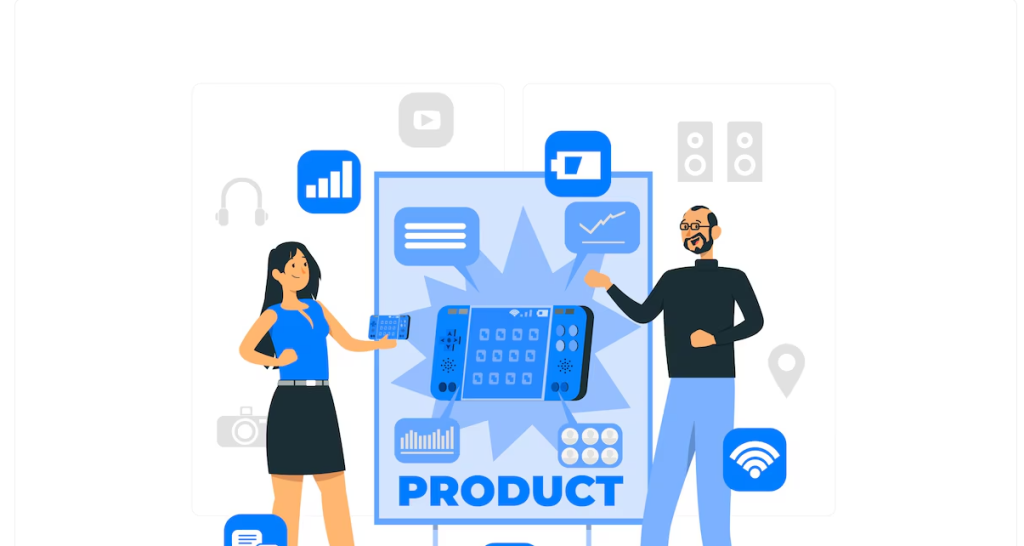Blog Detail
- Home
- Blog Detail

- March 15, 2025
What is Manufacturing PPC? How to Use It to Drive Leads and Sales
Manufacturing companies face a unique challenge in today’s digital landscape—standing out in a crowded market and capturing the attention of B2B buyers who are 70% through their purchasing decision before even reaching out. Traditional sales methods are no longer enough. To stay competitive, manufacturers must leverage Pay-Per-Click (PPC) advertising to generate leads, increase brand visibility, and drive sales.
However, running PPC campaigns in the manufacturing industry isn’t as simple as setting up Google Ads and hoping for results. Without the right strategy, ad spend can be wasted on unqualified clicks, low conversion rates, and poor ROI.
In this guide, we’ll break down the essentials of Manufacturing PPC, including expert strategies to optimize your campaigns, common pitfalls to avoid, and how to choose the right PPC agency to maximize your return on investment.
How PPC Works in the Manufacturing Industry
Pay-Per-Click (PPC) advertising helps manufacturing companies reach highly targeted buyers by displaying ads on search engines, social media, and industry websites. When a potential customer searches for manufacturing solutions, your ad appears at the top of search results, driving traffic to your website.
PPC campaigns in the manufacturing sector require strategic keyword selection, compelling ad copy, and optimized landing pages to convert visitors into leads. Unlike traditional marketing, PPC provides instant visibility, allowing manufacturers to compete effectively in a niche market.
With precise targeting options—such as industry-specific keywords, geographic filters, and audience segmentation—manufacturers can ensure their ads reach decision-makers at the right stage of the buying journey.
Additionally, tracking metrics like click-through rate (CTR), cost-per-click (CPC), and conversion rates help refine campaigns for maximum ROI. When executed correctly, PPC can generate high-quality leads, increase brand awareness, and accelerate sales growth for manufacturing businesses.

Advantages of PPC for Industrial Companies and Manufacturers
✅ Precise Ad Targeting
PPC allows manufacturers to reach their ideal clients by targeting specific industries, locations, job titles, and interests. Whether selling raw materials or finished products, PPC ensures your ads reach decision-makers actively searching for your solutions.
✅ Speed & Immediate Impact
Unlike organic SEO, which takes months to show results, PPC campaigns can be launched instantly. Manufacturers can quickly adapt to market shifts, supply chain disruptions, or seasonal demand changes in real time.
✅ Budget Control & Cost Efficiency
PPC operates on a pay-per-click model, ensuring manufacturers only spend on engaged users. Flexible budgeting options help align ad spend with financial goals, making it a cost-effective strategy.
✅ Measurable Analytics & Performance Tracking
PPC provides in-depth data on impressions, clicks, and conversions. Manufacturers can track campaign success, optimize keywords, and refine audience targeting for maximum ROI.
By leveraging PPC, industrial companies can increase visibility, generate high-quality leads, and drive revenue growth.
What Are the Steps in Production Planning and Control?
Effective production planning and control (PPC) ensures manufacturing operations run smoothly, optimizing resources, reducing waste, and meeting delivery deadlines. Here’s a step-by-step breakdown of the key stages:
1. Planning – Defining Production Goals
Production planning sets the foundation by determining what to produce, how, and who will handle it. It considers labor, equipment, material requirements, and order quantities. Input from sales and engineering departments helps create a streamlined production workflow.
2. Routing – Mapping the Production Path
Routing defines how raw materials move through the production process. It determines operations, materials needed, and production locations, ensuring efficient resource utilization and minimal delays.
3. Scheduling – Allocating Time for Tasks
Scheduling focuses on when each operation should be completed. It includes master schedules, daily schedules, and operation schedules, ensuring work progresses without bottlenecks.
4. Loading – Balancing Workloads
Loading manages work distribution across machines and workers. If resources are underutilized, additional work is assigned. If overloaded, adjustments like overtime or subcontracting prevent delays.
5. Dispatching – Executing Production Orders
This step releases work orders, materials, and instructions, ensuring smooth workflow transitions. It coordinates resource availability and production sequencing.
6. Follow-Up – Monitoring & Problem-Solving
Also known as expediting, follow-up identifies delays, inefficiencies, or quality issues. It compares actual performance to planned outcomes, helping managers adjust schedules and production targets for continuous improvement.
Optimizing production planning and control leads to better efficiency, cost savings, and timely deliveries—driving manufacturing success.
Expert PPC Advertising Tips for the Manufacturing Sector
Pay-per-click (PPC) advertising in the manufacturing sector requires a targeted, data-driven approach to attract high-intent buyers. Unlike general e-commerce or service-based PPC strategies, manufacturing PPC must address complex buyer journeys, industry-specific pain points, and a highly technical audience.
To maximize your return on ad spend (ROAS), your PPC strategy must be tailored to who you’re targeting—end clients or distributors.
Expert PPC Advertising Tips for the Manufacturing Sector
Pay-per-click (PPC) advertising in the manufacturing sector requires a targeted, data-driven approach to attract high-intent buyers. Unlike general e-commerce or service-based PPC strategies, manufacturing PPC must address complex buyer journeys, industry-specific pain points, and a highly technical audience. To maximize your return on ad spend (ROAS), your PPC strategy must be tailored to who you’re targeting—end clients or distributors.
Understanding Your Target Audience: End Clients vs. Distributors
When targeting businesses that will use your manufactured products, your PPC ads should emphasize cost savings, efficiency gains, and innovation. Highlight how your product lowers operational costs, improves production speed, reduces waste, and stands out from competitors. For example, an effective ad might read: “Cut Costs by 20% with Our High-Precision CNC Parts! Boost efficiency and reduce downtime with our industry-leading precision components. Get a free quote today!”
Distributors are not just buying a product; they’re investing in reliability and supply chain efficiency. Your PPC ads should highlight production capacity, supply chain strength, and quality control. Emphasize how you can scale to meet demand, ensure on-time delivery, and guarantee consistent product quality. A strong ad could read: “Reliable Wholesale Manufacturing with Guaranteed On-Time Delivery! Scalable production, precision engineering, and seamless supply chain management.
Strategic Keyword Research: Go Beyond Generic Terms
Using high-intent, industry-specific keywords ensures that your ads attract decision-makers instead of casual browsers. High-intent keywords such as “Automotive metal stamping supplier,” “Industrial injection molding services,” and “Precision CNC machining quotes” are more effective than broad terms like “CNC” or “Manufacturing.” Long-tail keywords that mirror how buyers search when they’re ready to purchase, such as “ISO-certified metal fabrication for aerospace,” will improve conversion rates.
Optimizing Your Landing Pages for Conversions
Even the best PPC ads won’t work if your landing page fails to convert visitors into leads. Your page should match ad copy, highlight unique value propositions, include a strong call to action such as “Get a Quote” or “Request a Sample,” and showcase social proof through testimonials, industry certifications, or case studies. Instead of directing traffic to a generic homepage, a well-optimized landing page should feature a clear CTA, product images, trust signals, and a streamlined quote request form.
Using Retargeting to Capture High-Intent Leads
Manufacturing buyers have longer sales cycles than typical B2C customers, often requiring multiple site visits before making a purchase decision. Retargeting ads on Google or LinkedIn can help recapture high-intent leads who visited your pricing page but didn’t request a quote, downloaded a whitepaper but haven’t contacted sales, or abandoned a form before submitting their information. An example retargeting ad could read: “Still Searching for a Reliable Metal Fabricator? Get a Fast, No-Obligation Quote Today!”
Leveraging Visual & Video Ads for High Engagement
PPC for manufacturing doesn’t have to rely solely on text ads. Visual content, including Google Display Ads and LinkedIn Carousel Ads, can showcase production facilities, machinery in operation, and quality control processes. Video content is particularly effective, as 70% of B2B buyers watch videos before purchasing industrial products. A 30-second clip demonstrating a high-speed injection molding process or showcasing an ISO 9001-certified testing lab can boost engagement and credibility. Adding video case studies to PPC landing pages further builds trust and increases conversions.
Tracking & Optimizing Campaign Performance
The best PPC campaigns are never static. Manufacturers must continually analyze performance and refine strategies. Key metrics to track include Click-Through Rate (CTR) to assess engagement, Conversion Rate to measure effectiveness, Cost-Per-Lead (CPL) to ensure efficiency, and Return on Ad Spend (ROAS) to determine profitability. A/B testing different headlines, descriptions, and landing pages helps improve performance over time. By implementing these expert PPC advertising strategies, manufacturing businesses can drive more high-quality leads and maximize their advertising investment.
The Costs of PPC for Manufacturers
PPC advertising for manufacturers requires a strategic approach to control costs while maximizing returns. Several factors influence how much a manufacturing company needs to invest in paid search campaigns. Understanding these costs can help businesses plan their budgets effectively and achieve better results.
Key Factors That Influence PPC Costs
Several elements affect PPC costs for manufacturers:
- Keyword Competitiveness – High-demand keywords in the manufacturing sector often have a higher cost-per-click (CPC).
- Bid Strategy – Competitive industries require higher bids to secure top ad placements.
- Ad Quality Score – Google rewards high-quality, relevant ads with lower CPCs.
- Landing Page Optimization – A well-designed landing page reduces the cost per acquisition (CPA).
- Ad Copy and Design Costs – High-quality ad creatives improve engagement and reduce wasted ad spend.
High-Intent Keywords and Their Impact on Costs
Not all manufacturing-related keywords cost the same. High-intent keywords signal strong purchase intent, making them more expensive but more effective for conversions.
Comparison of High-Intent vs. Low-Intent Keywords
| Keyword | Search Volume | CPC Range | Purchase Intent |
| Custom CNC machining services | 1K – 5K | $8.75 – $15.30 | High |
| Manufacturing execution system | 1K – 10K | $7.90 – $12.00 | High |
| Metal fabrication supplier | 5K – 10K | $6.50 – $10.80 | High |
| Lean management | 1K – 10K | $1.38 – $3.25 | Low |
| Manufacturing techniques | 10K – 50K | $0.80 – $2.50 | Low |
Focusing on high-intent keywords may lead to higher costs per click, but it also results in better lead quality and higher conversion rates.
Strategies to Reduce PPC Costs

To keep PPC costs manageable while maintaining high-quality leads, manufacturers should implement these strategies:
- Use Long-Tail Keywords – Instead of bidding on broad terms like “CNC machining,” target specific phrases such as “ISO-certified CNC machining supplier for aerospace.”
- Geo-Targeting – Focus on regions where potential clients operate to eliminate unnecessary ad spend.
- Negative Keywords – Exclude irrelevant searches like “free manufacturing software” to prevent clicks that won’t convert.
- Keyword Research Tools – Use Google Keyword Planner to identify cost-effective keywords with lower CPCs and higher conversion potential.
Additional Costs in PPC Campaigns
Beyond keyword bidding, manufacturers should budget for the following expenses:
Ad Copy and Design
Professional ad copy and high-quality graphics can increase click-through rates (CTR) and conversions. This may cost between $500 and $2,000 per month.
Landing Page Development
A well-optimized landing page is critical for converting ad clicks into leads. A one-time development cost can range from $1,000 to $5,000.
PPC Management Fees
Managing PPC campaigns requires expertise. Businesses can handle it in-house or hire an agency. Management fees typically range from 15-30% of ad spend.
Maximizing PPC ROI for Manufacturers
While PPC can be costly, strategic planning can help manufacturers achieve better returns:
- Focus on high-intent, long-tail keywords to improve conversions.
- Use negative keywords and audience targeting to avoid wasted ad spend.
- Invest in high-quality ad copy, design, and landing page optimization.
- Regularly monitor and adjust campaigns to lower CPC and increase ROI.
By taking a data-driven approach, manufacturers can make PPC advertising an effective lead-generation tool while keeping costs under control.
Wrapping up
PPC advertising can be a powerful tool for manufacturers, but managing costs effectively is essential for maximizing returns. High-intent keywords may have a higher CPC, but they drive quality leads and better conversions. By refining keyword strategies, optimizing ad copy, and improving landing pages, manufacturers can enhance their PPC performance while keeping expenses under control.
Investing in the right PPC strategy—focusing on audience targeting, negative keywords, and ongoing campaign optimization—ensures that every dollar spent contributes to business growth. With careful planning and execution, manufacturers can turn PPC into a profitable and sustainable marketing channel.
